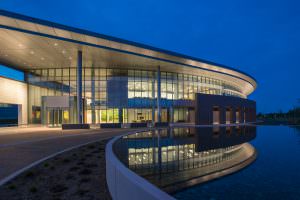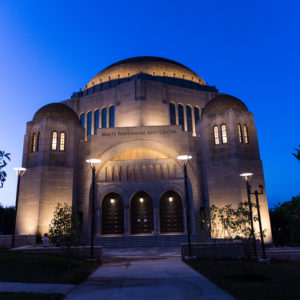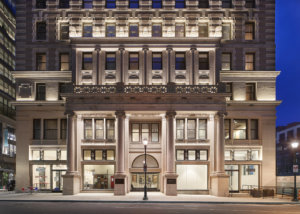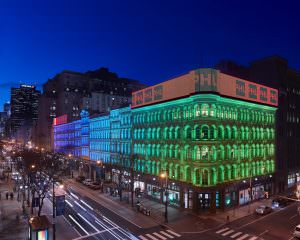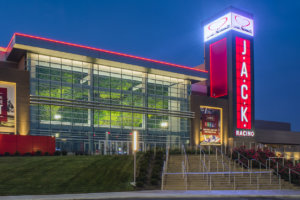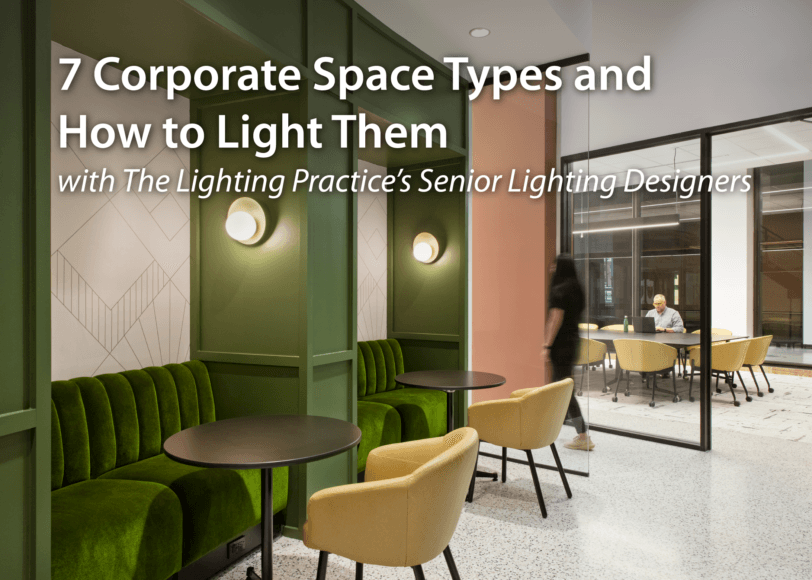Well-designed façade lighting doesn’t just illuminate a structure – it enhances its architectural identity and tells the story of the building. At night, façade lighting allows a building to make a statement in the community and fosters a meaningful connection with observers.
“It’s about creating a destination, creating drama,” shares lighting designer Chris Hallenbeck, Project Manager at The Lighting Practice. “It’s important to create a positive emotional reaction for a number of different people – people driving down the street, in the building, and walking by. We’re visually drawing someone’s eye to the structure and making them say, ‘Hey, what is that? I want to go there!’”
“Every building can benefit from façade lighting,” continues Hallenbeck. “Context helps inform the approach.” At The Lighting Practice, site visits and office-wide charettes help define the most critical aspects of an exterior lighting project, as well as the best techniques for creating an impactful concept.
“Understanding the area that the building exists in and getting a feel for the neighborhood is incredibly important,” he explains. “Lighting a building in Las Vegas or Times Square is very different than lighting a building in a small rural county. Each context requires a unique approach. We want to really be respectful of neighbors and create value for the community.”
The type of building plays a key role in determining façade lighting design, as well. For retail projects, exterior lighting can amplify a company’s branding. The lighting design for Target, for example, focuses on clean lines and big forms – a vibrant, modern aesthetic that reinforces the brand’s sensibilities. At Target in Bronx, New York, the façade lighting reveals an atrium with seven interlocking 12-foot diameter glowing rings, which play off the company’s bullseye logo and invite observers to enjoy a meaningful shopping experience.
Healthcare institutions, such as Inspira Medical Center in Mullica Hill, NJ, are active members of their communities. The exterior lighting for Inspira’s state-of-the-art health center is both calming and reassuring and reinforces that the hospital is here for the people in its community.
Façade lighting can help communicate the history of a building, as well. As part of a significant rebranding and capital improvement project for the iconic Lits Building in Philadelphia, The Lighting Practice designed façade lighting that showcases the building’s historic Victorian architecture while also transforming the building into a bold, modern destination. An LED billboard nods to the building’s original wraparound signage, while a color-changing lighting system across the entire facade creates visual balance and highlights the original architectural details.
“When a building looks good, people want to be there,” sums up Hallenbeck. “Even on a subconscious level, façade lighting can create a meaningful visual imprint moment that connects people to a building.”



